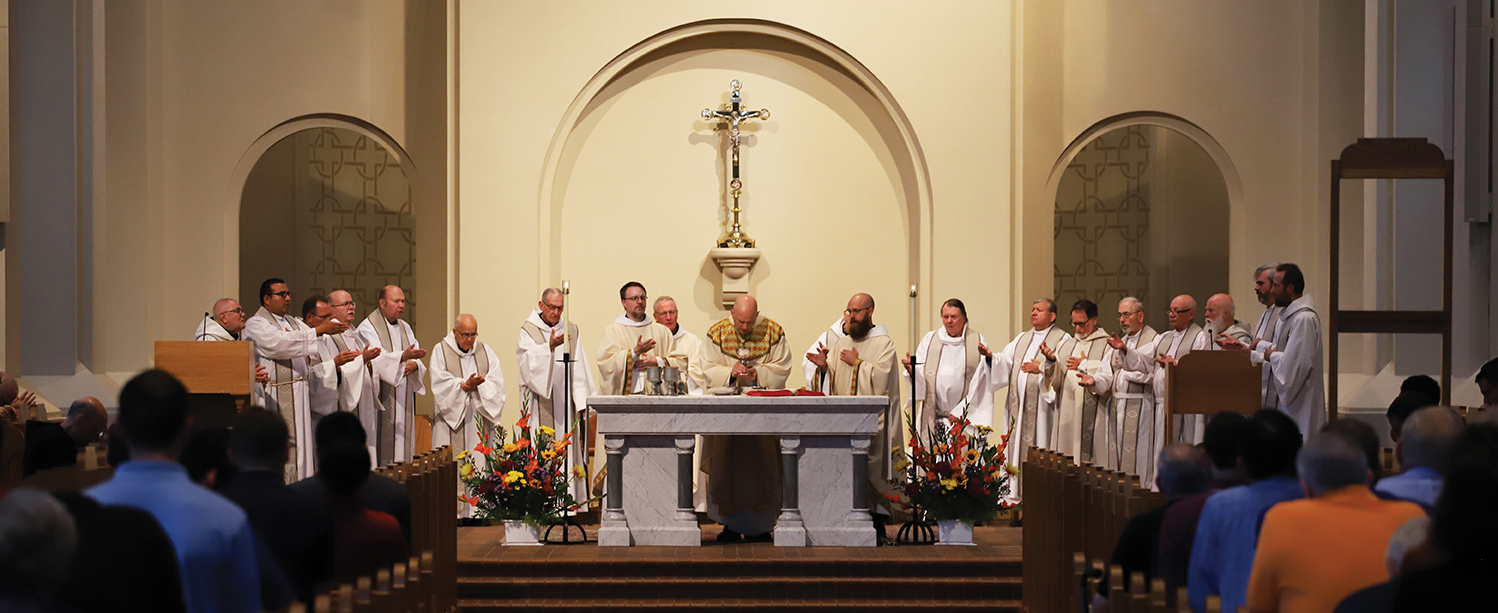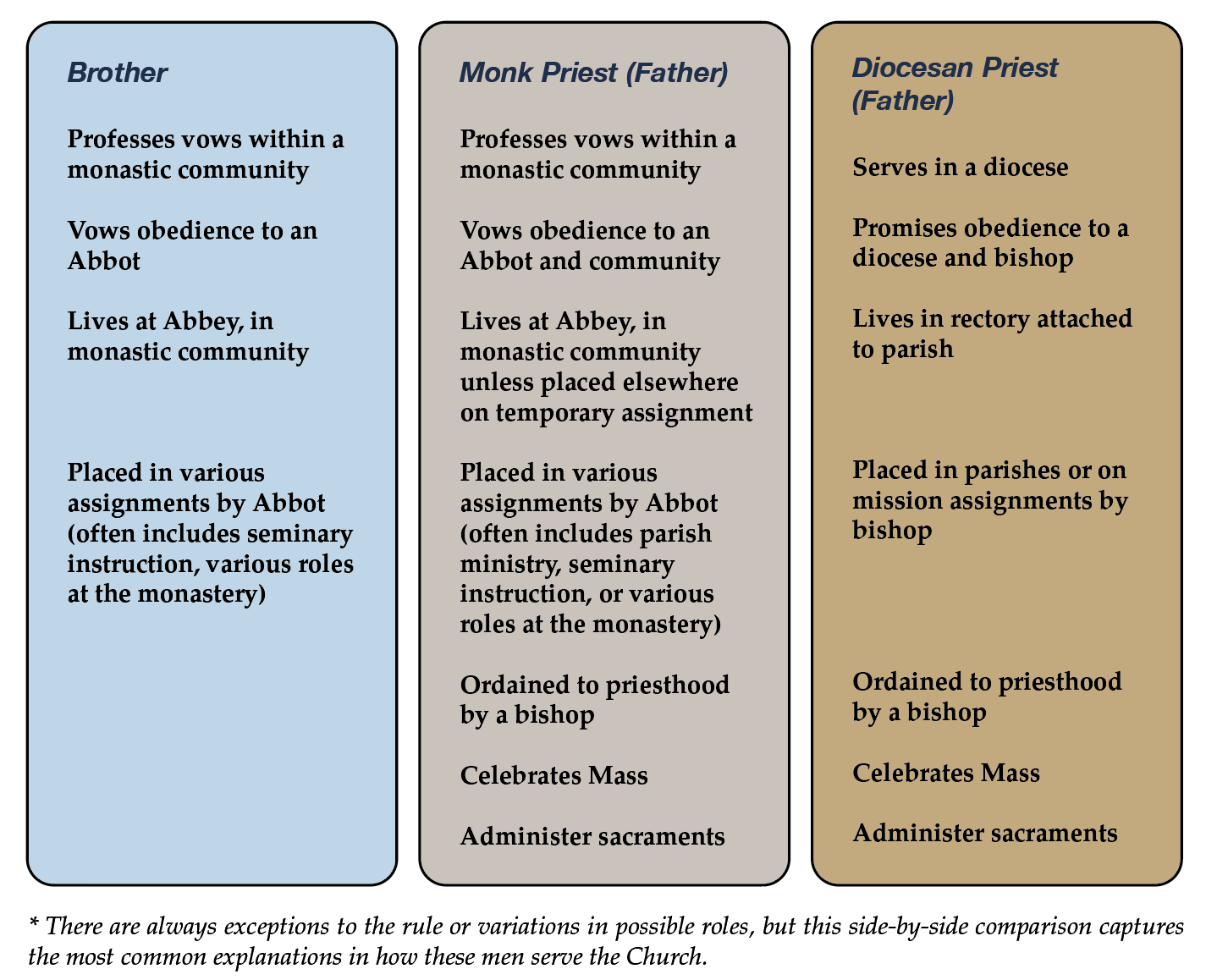
Priest, Monk, Brother, Father: What does it all mean?
This article was originally published in Tower Topics, Spring 2020
Understanding Religious Roles
Sometimes it can be difficult to understand the differences and similarities between the title “Brother” and “Father,” a priest of Conception Abbey and a priest in a parish not associated with the Abbey, or even the monks at Conception and the seminarians studying at Conception Seminary. While there are many ways these religious men work and serve the Church, they all have one thing in common—they have answered the call to religious life and/or priesthood.
Here at Conception, our community is made up of men called monks, who have professed vows of obedience, stability, and fidelity to the monastic way of life. All are monks, but some are brothers, and some are priests. The seminarians we teach and form will go on to become diocesan priests who instead report to and serve their home dioceses. Here is a chart to help define the roles of these religious men.
Monk Priests and Diocesan Priests
Written by Fr. Etienne Huard, OSB, Monastic Vocation Director
People are often surprised to find that there is a difference between a diocesan priest and a monastic priest. I commonly have conversations that go something like this:
“So, are you a priest or a monk?”
“Yes, I am.”
“What? Can you be both? What parish are you assigned to?”
“I’m a monk.”
“But I thought you said you were a priest?!”
The person begins to realize that not all priests that serve the Church are attached to a diocese and parish. So, what is the difference?
First, it is good to make sure we all understand that our priesthoods are not different. Monks can be priests in the same way as diocesan priests. A bishop ordained us monk priests. We celebrate Mass, hear confessions, and are able to do all the sacramental things a diocesan priest can do. The difference is where we live and who our boss is.
When a diocesan priest is ordained, he makes promises to serve and be obedient to a particular place and person: his diocese and his bishop. Let’s use the Diocese of Kansas City-St. Joseph, our local diocese, as an example. When a man is ordained a diocesan priest, he makes promises to live in and serve in the Diocese of Kansas City-St. Joseph. A monk priest is ordained and makes vows to live in and work in his monastery, like Conception Abbey.
Likewise, a diocesan priest promises to be obedient to the bishop of the Diocese of Kansas City-St. Joseph, currently Bishop Johnston, and all new bishops of the diocese that follow. A monk priest is ordained and makes vows to be obedient to the Abbot of the monastery, currently Abbot Benedict, and new abbots that follow.
While a monk priest may be assigned by the Abbot to serve in parishes outside the monastery, as many of us do, his base of operations is always the monastery. A diocesan priest’s headquarters is the diocese.
The main difference between a diocesan priest and a monk-priest is where he has made his promises to serve and be obedient.
Here at Conception Seminary College, our seminarian population is primarily here to receive their undergraduate degree to become diocesan priests, and they are formed mostly by monk priests. Once they graduate, they attend four years of theology school and return to their diocese.
Posted in General, Monastery News


